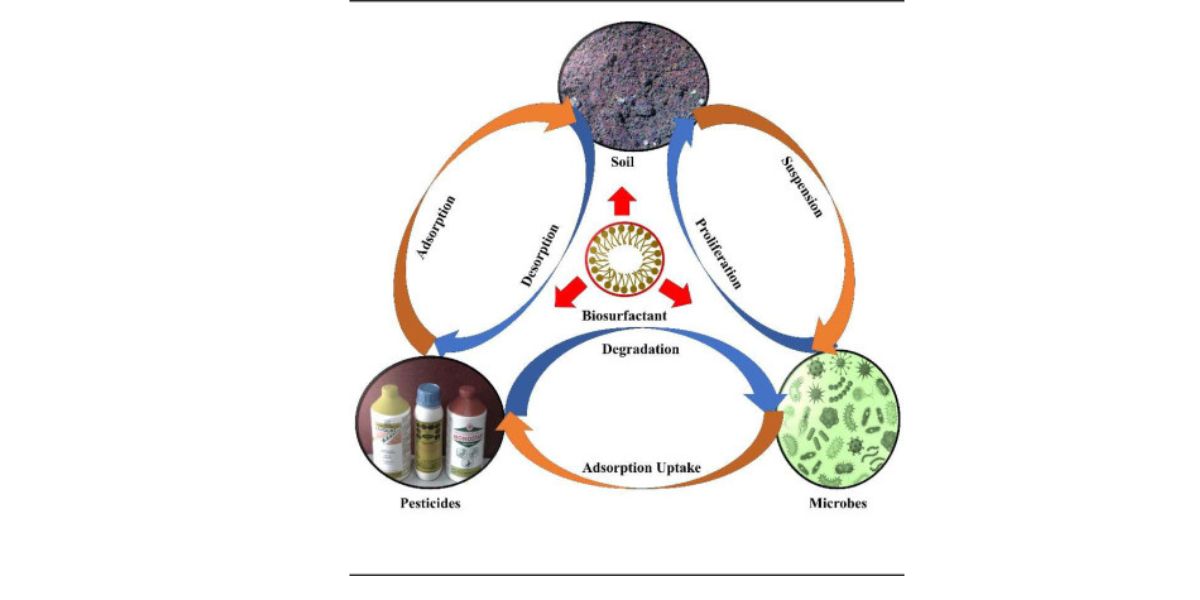How Tiny Microbes Make Big Changes With Biosurfactants

Strong 8k brings an ultra-HD IPTV experience to your living room and your pocket.
Microbes are tiny living things that are too small to see with the naked eye, but they have a huge impact on our world. Some of these microbes produce special molecules called biosurfactants, which are like natural soaps or detergents. These biosurfactant help microbes survive, but they also have many useful applications for humans—from cleaning up oil spills to making medicines.
In this article, we’ll explore how these tiny microbes create biosurfactants and how these powerful molecules are changing industries in big ways.
What Are Biosurfactants?
Surfactants are chemicals that reduce surface tension between liquids and solids. You encounter them every day in soaps, shampoos, and detergents. Most commercial surfactants are made from petroleum, which can harm the environment.
Biosurfactants, on the other hand, are made by living organisms, especially bacteria and fungi. They are biodegradable, meaning they break down naturally without polluting the environment. Because they are eco-friendly and effective, scientists and industries are increasingly interested in using them instead of synthetic surfactants.
How Do Microbes Make Biosurfactants?
Microbes produce biosurfactants as part of their survival strategy. Some use them to break down oil and fats for food, while others use them to fight off competing microbes. Here’s how they do it:
Feeding on Hydrocarbons – Some bacteria, like Pseudomonas and Bacillus, feed on oil or other hydrocarbons. Since oil doesn’t mix well with water, these microbes release biosurfactants to break oil into smaller droplets, making it easier to digest.
Fighting Competitors – Certain fungi and bacteria produce biosurfactants to kill or block competing microbes. This helps them dominate their environment.
Helping Movement – Some microbes use biosurfactants to slide across surfaces or form protective biofilms, which are like tiny microbial cities.
Microbes create biosurfactants through natural fermentation processes. Scientists can grow these microbes in labs or large fermentation tanks to produce biosurfactants on a bigger scale.
Why Are Biosurfactants Better Than Chemical Surfactants?
Biosurfactants have several advantages over synthetic surfactants:
- Eco-Friendly – They break down naturally, reducing pollution in soil and water.
- Less Toxic – They are safer for humans, animals, and plants.
- Effective in Extreme Conditions – Many biosurfactants work well in high temperatures, salty water, or acidic environments where chemical surfactants fail.
- Versatile – They can be used in medicine, agriculture, cleaning products, and more.
Because of these benefits, researchers are working hard to find new ways to use biosurfactants in different industries.
How Are Biosurfactants Changing Industries?
1. Cleaning Up Oil Spills and Pollution
One of the biggest uses of biosurfactants is in bioremediation—cleaning up oil spills and toxic waste. When oil spills happen, traditional cleanup methods often involve harsh chemicals that can harm marine life.
Biosurfactants offer a safer solution. Microbes that produce these molecules can be sprayed onto oil spills, where they break down the oil into smaller, digestible parts. This helps natural bacteria in the environment consume the oil faster, cleaning the water and soil without toxic side effects.
2. Improving Agriculture
Biosurfactants can help farmers grow healthier crops. Some plant-friendly bacteria produce biosurfactants that:
- Help plants absorb nutrients better.
- Protect roots from harmful fungi and bacteria.
- Improve soil quality by breaking down pollutants.
Farmers can use these microbes as natural fertilizers and pesticides, reducing the need for harmful chemicals.
3. Making Medicine and Cosmetics
Biosurfactants have antibacterial and antifungal properties, making them useful in medicine. They can be used in:
- Wound Healing – Some biosurfactants help prevent infections in cuts and burns.
- Drug Delivery – They can help medicines dissolve better in the body.
- Skincare Products – Because they are gentle, biosurfactants are used in natural soaps, shampoos, and lotions.
4. Food Industry Applications
Biosurfactants are used in food processing to:
- Improve the texture of baked goods and dairy products.
- Help mix ingredients that normally don’t blend well (like oil and water in salad dressings).
- Keep food fresh by preventing harmful bacteria from growing.
- Since they are natural, they are a safer alternative to synthetic food additives.
5. Industrial and Household Cleaning
Many cleaning products contain harsh chemicals that can irritate skin and harm the environment. Biosurfactants are now being used in:
- Eco-friendly detergents – They clean effectively without toxic residues.
- Industrial cleaners – They help remove grease and oil from machinery.
- Laundry products – They work well in cold water, saving energy.
As more people look for green alternatives, biosurfactant-based cleaners are becoming popular.
Challenges and the Future of Biosurfactants
Despite their many benefits, biosurfactants still face some challenges:
- High Production Costs – Growing microbes and extracting biosurfactants can be expensive compared to making synthetic surfactants.
- Limited Large-Scale Production – Many biosurfactants are still in the research phase and not yet mass-produced.
- Finding the Right Microbes – Not all biosurfactants work for every application, so scientists must find the best strains for each use.
However, advances in biotechnology are helping overcome these challenges. Researchers are using genetic engineering to create microbes that produce biosurfactants more efficiently. Companies are also finding cheaper ways to grow these microbes using waste materials like vegetable oil or industrial byproducts.
Conclusion: Small Microbes, Big Impact
Tiny microbes may be invisible, but their biosurfactants are making a huge difference in our world. From cleaning up oil spills to improving medicine and agriculture, these natural molecules offer a greener, safer alternative to many chemical products.
Note: IndiBlogHub features both user-submitted and editorial content. We do not verify third-party contributions. Read our Disclaimer and Privacy Policyfor details.



